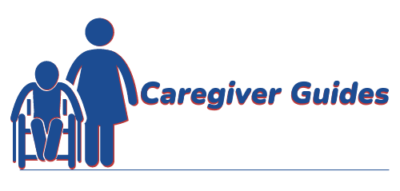
As you probably already know, Parkinson’s disease (PD) is a progressive neurological disease that affects the way a person is able to move. PD is caused by the loss of cells in certain parts of the brain that produce a chemical called “dopamine”. This is importing in helping us regulate our movements. A hallmark symptom of PD is tremors and shaking in the hand and arms. But other common symptoms are muscle rigidity, slowed down movements, and difficulty with maintaining balance. In addition, the disease can also cause a host of other symptoms that don’t have to do with movement. Symptoms such as depression, anxiety, and problems sleeping. Unfortunately, there isn’t a cure (yet) for PD, but symptoms can be managed with medications and therapies to a degree.
According to the Parkinson’s Foundation, there are about 1 million people (estimated) in the US are living with PD. Around the world the estimate is about 7-10 million people. PD is more common in older folks, but it can also occur in younger people. Michael J Fox is probably the most well known person who contracted PD at a younger age than most. But typically, the prevalence of PD increases with age, and it seems to be more common in men than in women.
What Are The Possible Causes Parkinson’s Disease
So, the exact cause(s) of Parkinson’s disease is not known. Scientists and medical professionals think it may be caused by a combination of genetics and other environmental factors. The research has identified certain genetic mutations that seem to increase the risk of developing PD, but the mutations discovered only account for a small percentage of cases. In most cases, no one really has a good idea of what the cause of Parkinson’s disease is.
The current thinking is that PD may be caused by a combination of factors, that include the following:
- Abnormalities in specific brain cells that produce dopamine
- Environmental factors, like past exposure to certain toxins or chemicals
- Possible changes in a person’s immune system
- And other factors that are yet unknown
It’s important to keep in mind and understand that Parkinson’s disease is not contagious. It can’t be passed from one person to another.
How Does Parkinson’s Affect The Body?
Often, the first signs of PD can be, and probably are, subtle. They will probably be mistaken for normal signs of aging. The most common early symptoms of Parkinson’s disease include:
- Tremors: This is the most common symptom of PD and is usually the first thing people notice. Tremors are the involuntary shaking movements and most commonly seen in the hands and fingers. But the arms, legs, and even head can be affected also.
- Slowed down movements: It also seems that people with PD have difficulty initiating, or starting, a movement. Those movements may also be slower than usual. This can make simple tasks such as getting out of a chair or walking across a room harder and more time consuming.
- Rigidity: People with Parkinson’s disease complain of stiffness (rigidity) in their muscles, which can makes moving difficult and can cause discomfort or balance problems.
- Impaired balance and coordination: People with PD may have difficulty with balance and coordinating movements. This can, and often does, increase the risk of falling.
- Other symptoms: You may also see changes in handwriting, how a person looks (their face may look distant without expression), and/or a change in voice quality(becoming softer or more monotone).
It is important to note that these symptoms can vary widely from person to person, and not everyone with Parkinson’s disease will experience all of these symptoms. If you are experiencing any of these symptoms, it is important to speak with a healthcare provider for a proper diagnosis.
What’s The Best Treatment For Parkinson’s?
Unfortunately, there is no cure for Parkinson’s disease, but there are a number of treatments that can help to manage symptoms and improve quality of life. Some treatment’s may work better for some than others. It’s important to have an open and engaged relationship with your neurologist and keep them up to date on how their prescribed treatment is working. Also, getting engaged with a support group will provide good resources and info on what has and hasn’t worked for others. The most common treatments for Parkinson’s disease include:
- Medications: There are several medications that can help to improve symptoms of Parkinson’s disease. These medications work by increasing the level of dopamine in the brain or by mimicking the effects of dopamine. Common medications used to treat Parkinson’s disease include levodopa, dopamine agonists, and MAO-B inhibitors.
- Physical therapy: Physical therapy can help to improve mobility, balance, and coordination in people with Parkinson’s disease.
- Occupational therapy: Occupational therapy can help people with Parkinson’s disease to adapt to their changing physical abilities and to continue to perform everyday tasks.
- Surgery: In some cases, surgery may be an option to help manage symptoms of Parkinson’s disease. One common surgical procedure used to treat Parkinson’s disease is deep brain stimulation, which involves the implantation of a device that sends electrical signals to specific areas of the brain.
- Lifestyle changes: Making certain lifestyle changes can also help to manage symptoms of Parkinson’s disease. These may include eating a healthy diet, getting regular exercise, and getting enough sleep.
It is important to work with a healthcare team to determine the most appropriate treatment plan for your individual needs. And keep in mind that since there is no cure for Parkinson’s currently, treatments will continue throughout the life time and specific physical activities will need to be incorporated into the daily routine and lifestyle.


